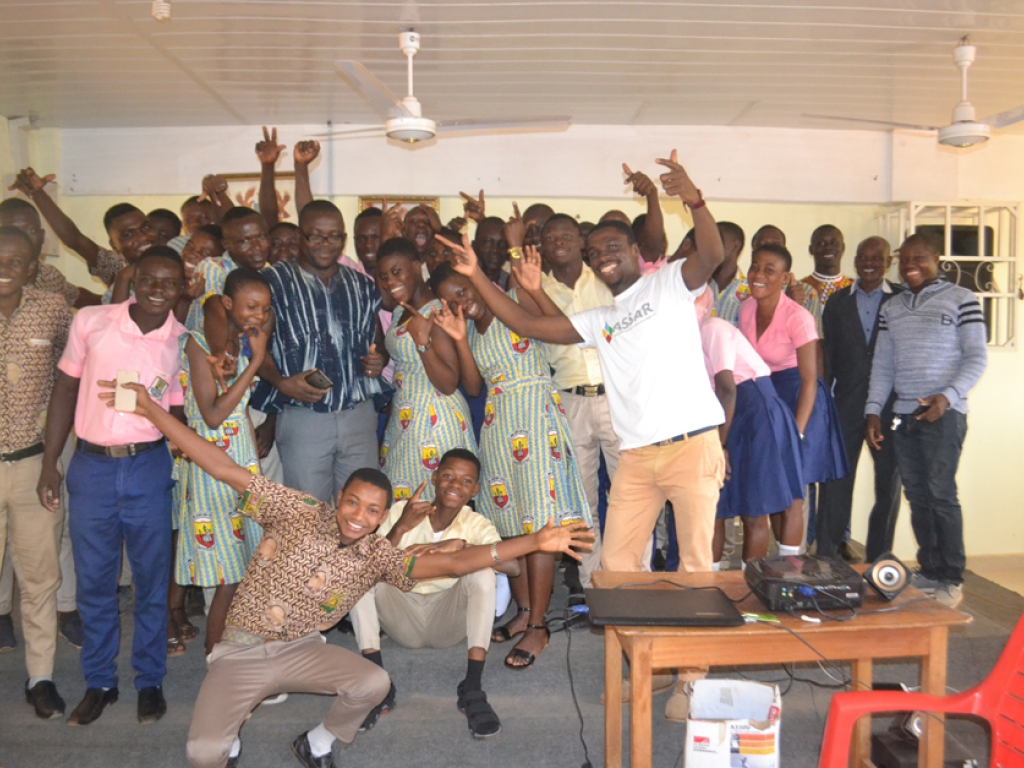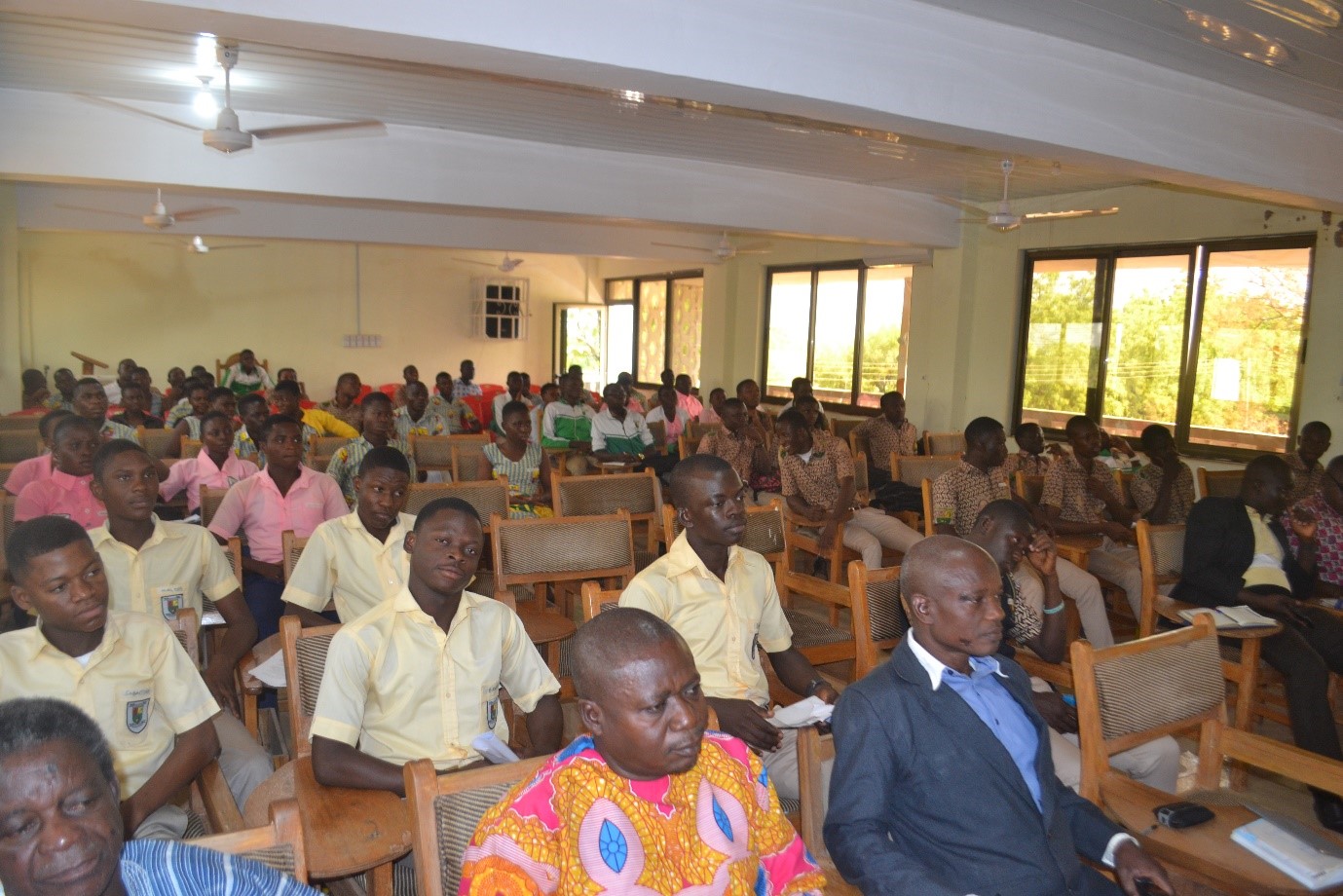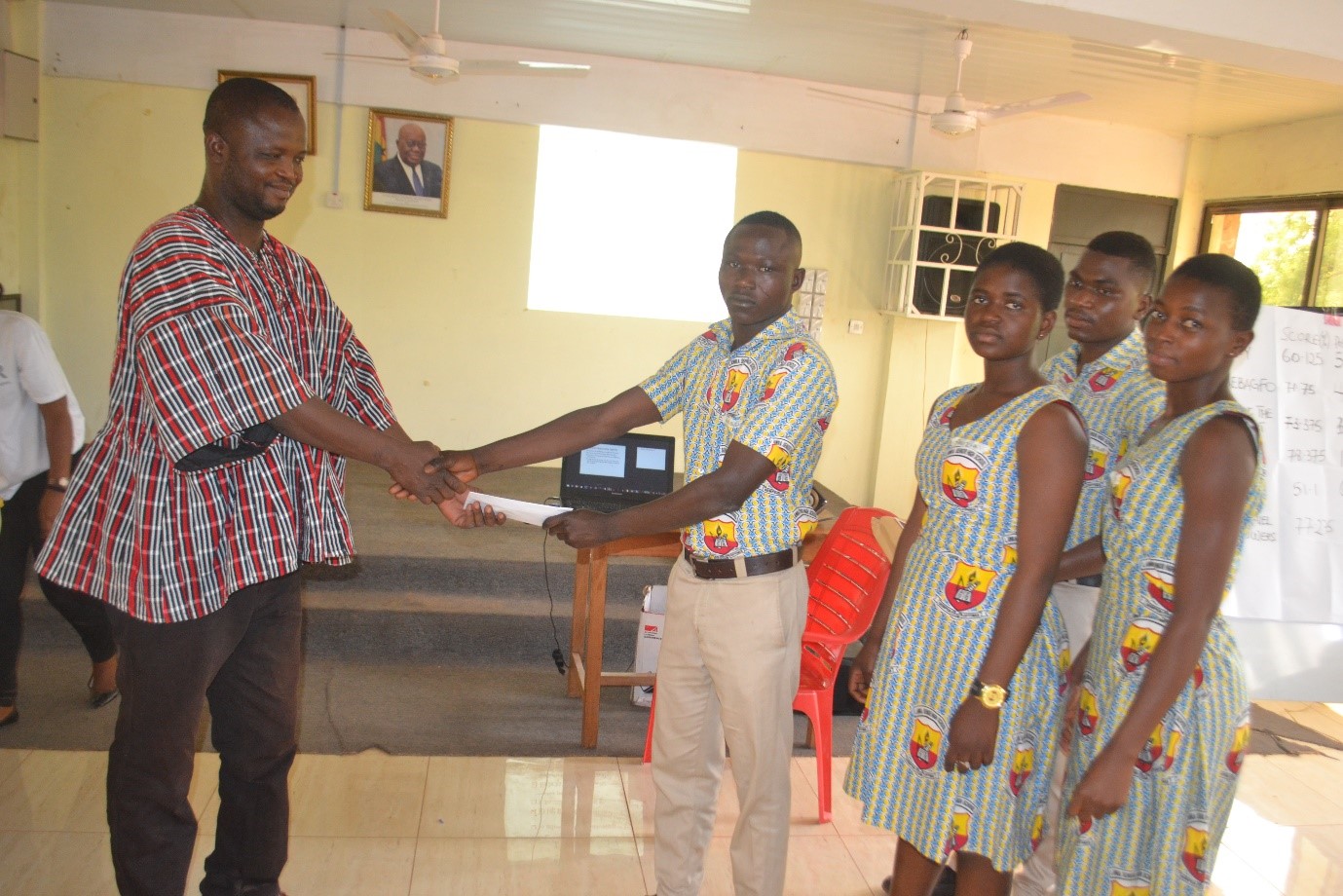Climate change adaptation through youth innovation

By Prosper Adiku, Rahinatu Sidiki Alare and Wendy Boakye

In the Upper West Region of Ghana, Transformative Scenario Planning (TSP) workshops undertaken by the Adaptation at Scale in Semi-Arid Regions (ASSAR) project, involving a diverse set of stakeholders, identified disaster risk reduction (DRR), ecosystem management, sustainable food and livelihood adaptation, improved market systems and climate smart water management as thematic areas requiring concerted efforts for promoting agriculture intensification and achieving food security in the region by 2035. Interactions during the TSP, as well as results from life histories studies on migration, identified the youth as a vulnerable group. With limited livelihood opportunities and the threat of climate change impacts on food security, most migrate to southern Ghana for other livelihood opportunities.
The realisation of the existence of a huge knowledge gap in climate change risks and adaptation in the area, as a result of limited information flow from researchers to stakeholders including vulnerable communities, led to the inclusion of a sixth strategy to ensure that research results of ASSAR are communicated successfully to promote effective and widespread adaptation in line with CARIAA’s overall vision. Thus, beyond the focus on the thematic areas, broadening of the scope of the audience to the climate change discussion through effective dissemination and education, particularly among the younger generation in vulnerable communities, will engender further action towards local adaptation.

| To support its Research into-Use (RiU) activities in response to the adaptation challenges, the ASSAR Ghana team, with support from START International, developed and held an intra- and interschools Climate Adaptation through Youth Innovation (CATYI) Competition for high schools in the Lawra and Nandom districts in search of innovative solutions to community-based environmental and climate impacts. |
The CATYI Competition sought to:
-
Promote dialogue and information exchange on climate and environmental issues through a competitive process (competition of ideas), and
-
Enhance the capacity of students in the identification and communication of local environmental problems
The process
In the build up to the competition, the ASSAR team paid visits to various schools to engage the students in talks on climate and environmental issues and enrolled interested schools. Subsequently, the team visited the competing schools to interact with the teams regarding their progress towards the final competition and made inputs into their initial submissions.
The finals of the competition involved three schools (Birifoh, Lawra and Nandom senior high schools) and six teams (two teams representing each school) and consisted of oral presentations based on the five ASSAR thematic areas identified as critical to agriculture and food security. The competition was held on Saturday, the 20th of January, at the Lawra District Assembly Hall. The event was attended by representatives from the respective district offices of the Ghana Education Service (GES). Others include some assembly members from Lawra, representatives from the school authorities as well as teachers and students from the competing schools.
A four-member jury (including two ASSAR team members) scored the presentations, using a set of criteria that included, among others, validity of arguments with clear linkage of environmental/climate issue to specific ASSAR theme(s) and clear recommendations/solutions with a view of innovation.
The titles of the top three presentations in the competition are as follows:
-
Save the Forest (ecosystem management) by the Pundits Team (Nandom SHS)
-
Assisting women to establish woodlots for fuelwood (ecosystem management) by the Tierebio Fuelwood Growers Team (Lawra SHS)
-
Extraction and improvement of groundnut oil and cakes (kulikuli) (sustainable livelihood empowerment) by the Mwinnebangfo Team (Lawra SHS)
The competing schools received various cash prizes, educational materials and certificates. The ultimate winners, the PUNDITS from the Nandom Senior High School (NANSEC) will be embarking on a three-day trip to the University of Ghana as part of their prize package. Their visit will also feature courtesy calls on key state institutions including the Ministry of Environment Science Technology and Innovation (MESTI), environmental clubs of selected schools as well as presentations from NGO partner institutions, such as Greener Impact International and Environment 360.

Sustaining the energy for action
This and other RiU activities support the ASSAR West Africa impact pathway on building skills and capacity to promote adaptation activities at the local level. The ASSAR Ghana team is working to create linkages with existing institutions such as MESTI and NGOs such as Greener Impact International, OXFAM Ghana and United Nations Development Programmes (UNDP) to help sustain and support the implementation of some of the relevant ideas that have been generated during the schools’ competition as well as help promote climate change education among the youth in general.
The CATYI Competition was implemented as part of the Small Opportunities Grant (SOG) Award received under the Adaptation at Scale in Semi-Arid Regions (ASSAR) programme. The SOGs are in recognition of the need to go beyond academic capacity building within ASSAR to do more to strengthen the capacities of those living and working in the ASSAR study sites. Read about other RiU-SOG Awards received by the ASSAR Ghana team here.
Photos by Prince Ansah.